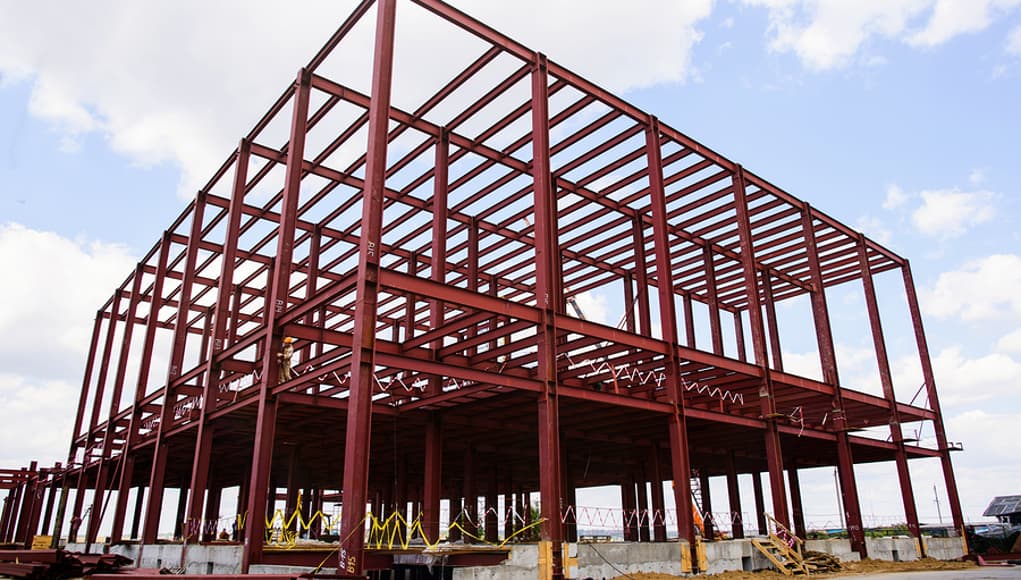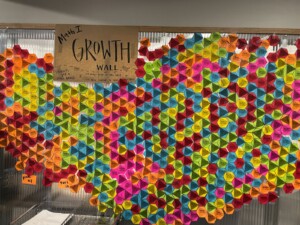Growing Into The Framework: A District’s CBE Implementation Strategy

A version of this blog ran on CompetencyWorks as the fifth in a blog series sharing Mesa County Valley School District 51‘s journey as it shifts to a competency-based education model (D51 uses the phrase performance-based learning).
Mesa County Valley School District 51 (D51) Superintendent Steve Schultz doesn’t ask “How are we going to implement a new performance-based system?” Instead, he asks, “How are they each of our forty-four schools going to grow into the framework?”
The answer is through a more personalized approach that lets schools and educators start where they are in their current learning and move forward from there.
Five Phases of Implementation
Everything is in motion at D51, and everyone is moving forward with the understanding that the different pieces will eventually need to be aligned. Thus, everything is a draft and everything stays open until related work is done. Paul Jebe, Director of Educator Effectiveness, likened it to the whirling teacups at Disneyland, bringing back that experience of loving every spin while simultaneously praying that it might be over soon.
Still in their first year of implementation, D51 has intensive activity in three of their five phases of work underway–and phase number does not necessarily suggest sequence. There is a cohort of seven demonstration schools hungry to put the entire model into place as soon as it is ready (it’s important to understand that they are not pilots, as pilots can be interpreted as experiments and are often a set of classrooms rather than district-wide).
The trick is that, given the simultaneous development of many of the pieces, the demo schools might find themselves operating in the third phase even if they are missing some pieces from phases one or two. In a few more years, there will be efforts underway by the schools and educators in all five phases as they continue to design, refine, skill-build and engage.
The journey and the implementation strategy are separate things, and both are important – the journey captures the new conditions (strong learning culture, shared vision, collective ownership, personalized, transparency and data-driven) that will shape the system (i.e., the paradigm shift), and the phases are how the work is being organized. Below is a quick scan of the phases and the different sets of work underway.
 1. Laying the Foundation
1. Laying the Foundation
There are many pieces for laying the foundation, including clarifying the pedagogical philosophy, making sure everyone understands why the shift to performance-based learning and the implementation strategy are necessary, and putting into place the essential ingredients for moving to implement a full performance-based learning system.
The essential ingredients really are the core of the work: laying the cultural foundation, emphasizing growth mindset and building social-emotional learning (SEL). Consider this the bedrock of the pedagogical philosophy at D51 of what is needed for students to learn, grow and become self-directed learners. The demonstration schools are supported in introducing these into their schools, and some others schools have already moved into this stage on their own.
Another part of this phase is the courageous step of developing new processes called holacracy, which replaces any bureaucratic routines. Below is the outline of steps in this phase:

2. Supporting Effective Practices
Demonstration schools receive intensive support, while other schools and teachers in the district can take advantage of Design Labs to build skills in practices related to growth mindset, workshop instructional models and the practices for self-directed learning such as codes of cooperation and standard operating procedures.
There are also efforts underway to revitalize professional learning communities within schools and to prepare principals to be ready to take on strong instructional leadership as teachers begin to look at student work, calibrate proficiency and identify areas for continuous improvement. Here is the outline of steps in this phase:

3. Building Performance-Based System
The goal of this work is to create the bones of the transparent, coherent and aligned system. There are a number of very important pieces of this work that are all underway, which means that the process is both simultaneous and iterative.
The pieces of the performance-based learning include graduate profile and corresponding graduation competencies; district-wide shared vision (complemented by school-wide shared vision); guiding principles; competency infrastructure (graduation competencies and standards with corresponding rubrics); and the Teaching and Learning Framework that defines the structure and processes.
The steps in this phase are below:

4. Beginning Personalized Learning
D51 is very specific about discussing personalized learning as something that will happen in the future. Leadership does not want to discuss personalizing education unless it is something that all students will benefit from – not a little bit here and a little bit there. Their goal is to have a coherent pedagogical approach to personalization to ensure the quality of choices and opportunities students have.
Most of all, they want to to make sure that the performance-based Learning system is in place to ensure personalization is actually adding up to something: students reaching, demonstrating and advancing upon mastery.
5. Refining Our System
This will be a process of mid-course corrections, a continuous improvement of the system itself and, as we see in other districts, waves of capacity building, improvement and innovation regarding instruction and assessment.
Midles emphasizes, “Districts need to stay in phases 1 and 2 as long as they can. The teachers in the demonstration schools will be learning what it means to integrate growth mindset and build new practices, but that doesn’t mean that they have mastered them to the point that they are routine. For all the teachers in the other schools, you want to keep those phases open and valued within the districts for years and years so that it is always okay for those last teachers who were waiting and seeing what was going to happen to build those schools.”
Implementation Strategy
D51 created their implementation strategy the way it stands for a number of reasons:
- Urgency: They have momentum and they don’t want to lose it with a long implementation roll out.
 Enthusiasm: The schools and educators on board would prefer to keep moving forward where possible, knowing that the performance-based system won’t be designed and ready to begin implementation until fall of 2017.
Enthusiasm: The schools and educators on board would prefer to keep moving forward where possible, knowing that the performance-based system won’t be designed and ready to begin implementation until fall of 2017.- Open Learners: I met an extraordinary set of educators at D51. These innovators and early adopters all understand that they are on a steep trajectory curve and they are along for the ride. Knowing the phases while having the time to deepen their learning is actually a luxury.
- Valuing the Process of Laying the Groundwork: D51 thinks it is very important to take the time to lay the foundation of growth mindset and the right set of values. Midles remarked that other districts shorten this process too much and pay for it later. Integrating the growth mindset in school culture might take longer in some schools than others, and that’s okay.
- Iterative Process for Designing the System: There are several pieces that need to be developed, all of which are interdependent. No matter how it is done, it will require iteration. Thus, D51 is working on them simultaneously with attention to identifying the points of intersection.
- Investing in Ownership: Even though they brought Midles in to help guide the process, there is a commitment to ownership and ensuring the D51 model builds on what they had in place. Thus, the district isn’t designing the system in its conference rooms and sharing it with the schools. An inclusive, co-constructed design process is an important part of building ownership and tapping into the expertise and creativity of the educators across D51.
Personalization: The Last Frontier
Midles emphasizes to everyone she speaks with that personalization is a phase that doesn’t begin until the P-BL system is in place. There will be aspects of it, including more opportunities for self-directed learning and more flexible pacing the minute teachers start implementing the core set of effective practices (shared vision, code of cooperation and standard operating procedures) and the workshop model.
However, the full concept of personalization is a system-wide approach in which students fully get the support they need to succeed, receive coaching in the skills necessary to be lifelong learners and are engaged and motivated through rich opportunities for voice, choice and co-design. D51 understands personalization as a commitment of schools and districts to ensure that students are successful.
The only way that schools can monitor equity–at a minimum ensuring that historically underserved populations are getting a quality education and progressing towards graduation–is when the performance-based learning system can be put fully into place. Without it, personalization can quickly slip into the new realm of inequity–different and not equally valuable to learning. The question that D51 will be taking on after they have designed and implemented the system is what a system of personalized learning looks like where students get the support they need, the coaching and opportunities to take responsibility for their learning and the confidence that the same expectations of mastery are being held for every student.
Emphasis On The Structure of Teaching And Learning
If I was to map out the journey districts take on the path to performance-based learning, I would include the Swamp of Unpacking and Revising the Standards and Competencies, where many districts get stuck and lose their way. The precious time educators spend revising the wording of the competencies, standards and rubrics could be used to test them out and to open the door to the much richer conversation of calibrating the understanding of proficiency, instructional strategies and assessment literacy.
D51 is not spending a lot of time worrying about the design or texture of the competency framework. They’ve adopted the Colorado Academic Standards as the academic core to be complemented by an integrated framework of Social & Emotional Learning and Habits of Mind. There is a team thinking through the structure for the rubrics that can then be developed to begin the process of calibrating proficiency across the district and empower students.
D51 is putting a lot of creative resources toward co-designing the Teaching and Learning Framework with representation from both demonstration and non-demonstration K-12 sites, and it is now being vetted by teachers across the district. This Framework essentially describes the system and how it will work. In some ways, it is the map of the system and will help to identify all the points of alignment that are needed. It’s the tool that will spark conversations about when and how students are assessed for their learning and when and how students are able to advance upon mastery into higher grade levels.
For more, see:
- The Vision of Performance-Based Education at District 51
- Building Community Consensus for District Change
- Getting Smart Podcast | District 51 On Building a Performance-Based Education System
Stay in-the-know with all things EdTech and innovations in learning by signing up to receive the weekly Smart Update. This post includes mentions of a Getting Smart partner. For a full list of partners, affiliate organizations and all other disclosures please see our Partner page.







0 Comments
Leave a Comment
Your email address will not be published. All fields are required.